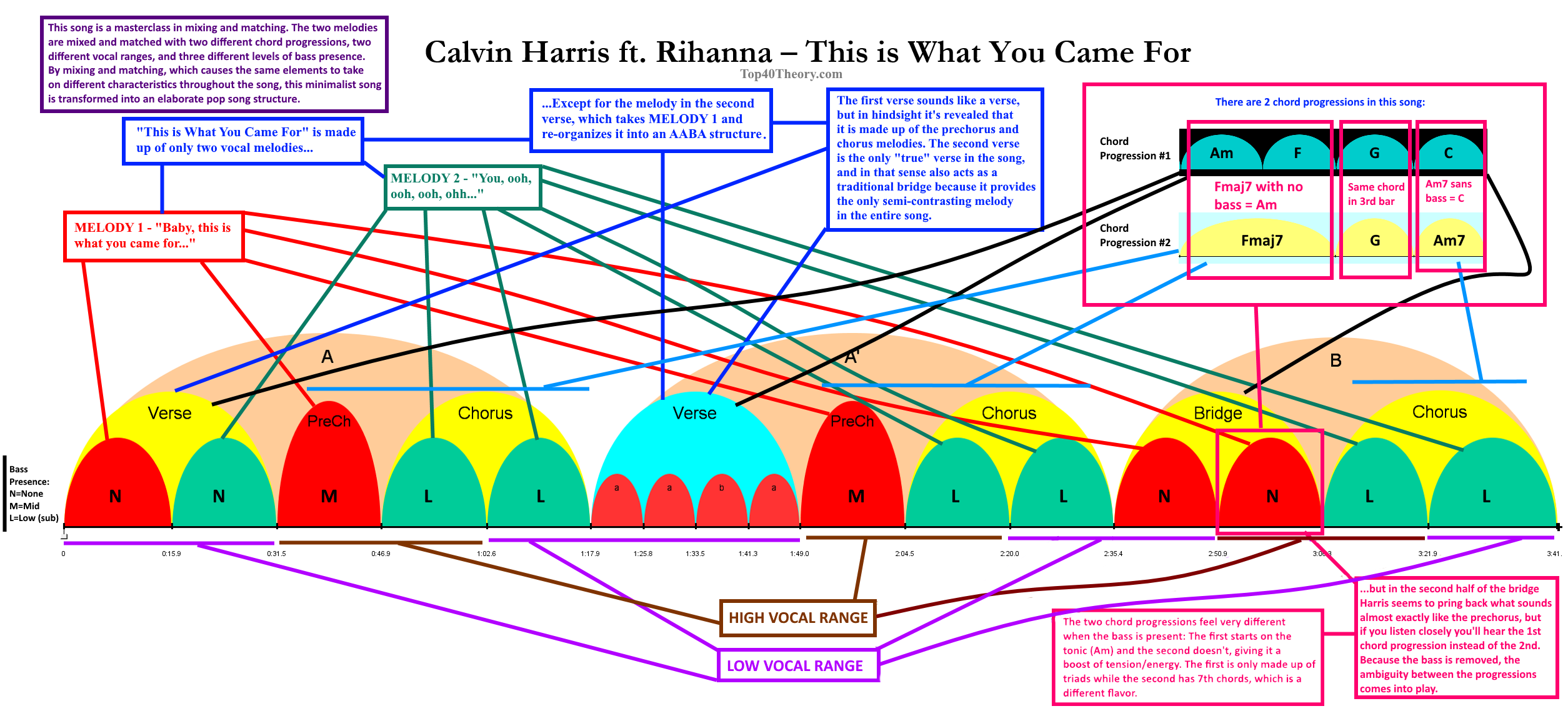Oct 10
/
Asaf Peres
Why Pentatonic Scales are So Popular in Pop Melodies (Infographic)

Pentatonic scales have been around for centuries and are the melodic foundation for many musical genres and cultures.
From the perspective of Western tonal music, pentatonic scales are the result of removing tendency tones - the notes most prone to dissonant clashes - from major or minor scales.
Removing scale degrees ^4 and ^7 from a major scale results in a Major Pentatonic scale.

Removing scale degrees ^2 and ^6 from a natural minor scale results in a Minor Pentatonic scale.

THE BENEFITS OF USING PENTATONIC SCALES
Excluding the tendency tones allows the melody to act independently of the underlying chord progression, which has several benefits:
- It makes it easier to create interesting sonorities that combine chord tones and non-chord tones.
- It allows creating ambiguity between relative major/minor keys and mixing them together in songs, because of the weakened sense of tonal gravity.
- It allows repetitions of the same melodic phrase over different chords.
- It makes it easier to create counterpoint between two different melodies, or even juxtapose two sections to create a 'mega-section'.
- It makes it easier to 'mix and match' different chord progressions with different melodies (for example, in Rihanna & Calvin Harris's "This is What You Came For" - see visual analysis below).
- It allows songwriters to come to sessions with different ideas and combine them.
- It opens up a lot of options for remixing.

SONGS THAT EXCLUSIVELY USE PENTATONIC SCALES
Many hit songs exclusively use pentatonic scales for the lead vocal melody. Among them are:
- Ed Sheeran - "Shape of You"
- Camila Cabello - "Never Be the Same"
- Taylor Swift - "Delicate"
- The Chainsmokers ft. Halsey - "Closer"
- Bebe Rexha & Florida Georgia Line - "Meant to Be"
And many more...

CHORD PROGRESSIONS
To clarify, when I mention songs that exclusively use the pentatonic scale, I am referring to the vocal melody. It would be very difficult to avoid ^4 and ^7 (or ^2 and ^6 in minor) when using diatonic triads as the underlying chords. I and vi would be the only viable options...
However, when used as chord tones in diatonic triads, tendency tones become significantly more stable and impose much less tonal gravity than they do as featured melodic notes.
But let me address specific chords.
In the case of ii and IV (or iv and VI in minor), since the melody is always perceived as being 'on top', a concurrent sounding of ^4 and ^3 (or ^6 and ^5 in minor) would not yield a harsh sounding minor 2nd, but a perceived major 7th. In the context of modern pop, a major 7th is not dissonant in the classical sense, but sounds like a relatively stable tonal coloring of the chord.
In the case of iii and V (or v and VII in minor), the presence of ^7 (or ^2) poses a bit more of a 'threat' for harsh clashes, but this is usually neutralized in one or more of the following ways:
- Omitting the tendency tone from the chord (e.g., playing only ^5 and ^2 in place of a full V triad).
- Displacing the tendency tone and playing a sus2 or sus4 chord.
- Burying the tendency tone in the mix so it doesn't compete with the melody.
- Including the tendency tone in a lush sonority that's perceived as being in a separate timbral space than the vocal melody.
CONCLUSION
Pentatonic scales are extremely popular these days with pop songwriters because they allow for musical freedoms and interesting sonorities that would be difficult to achieve otherwise without venturing too far away from the pop sound.
They also lend themselves well to the collaborative nature of pop songwriting and production, making it easier to combine ideas and elements coming from different creative minds.
This does not mean that as a pop creator you should always stick to pentatonic scales - many hit pop songs use 'regular' major and minor scales, and some even use chromatic notes - but they can serve as an important tool in your creative arsenal.
They certainly are for most hitmakers these days.
Follow Top40 Theory on social media - Instagram, YouTube, Facebook - for more pop music theory content. If you are a songwriter interested in a much deeper dive into hooking techniques and the creative tools used by Max Martin and other hitmakers, consider applying to the Top40 Theory Melodic Math course.
Top40 Theory Email List
Submit your email to receive important announcements about new courses and content from Top40 Theory
Thank you!
Copyright © 2022

